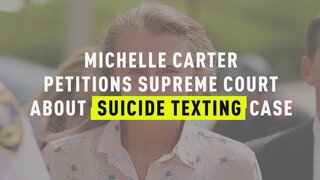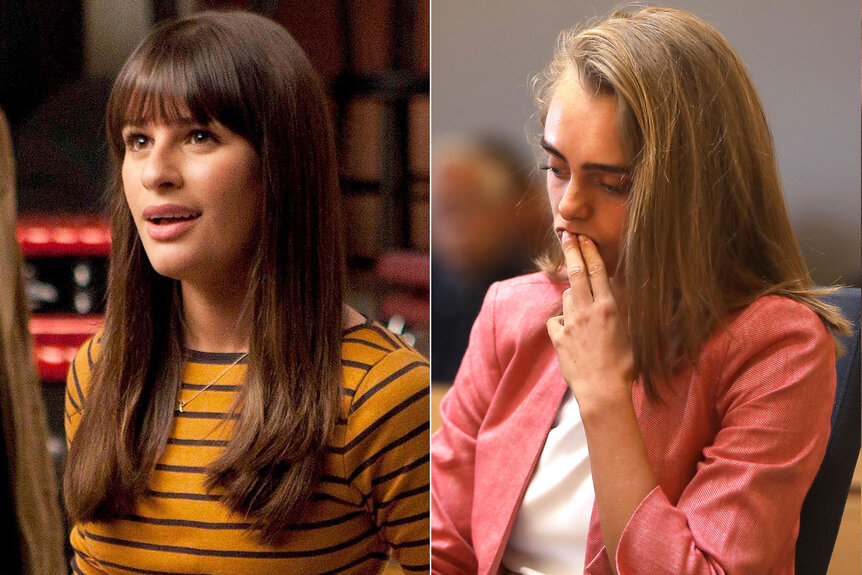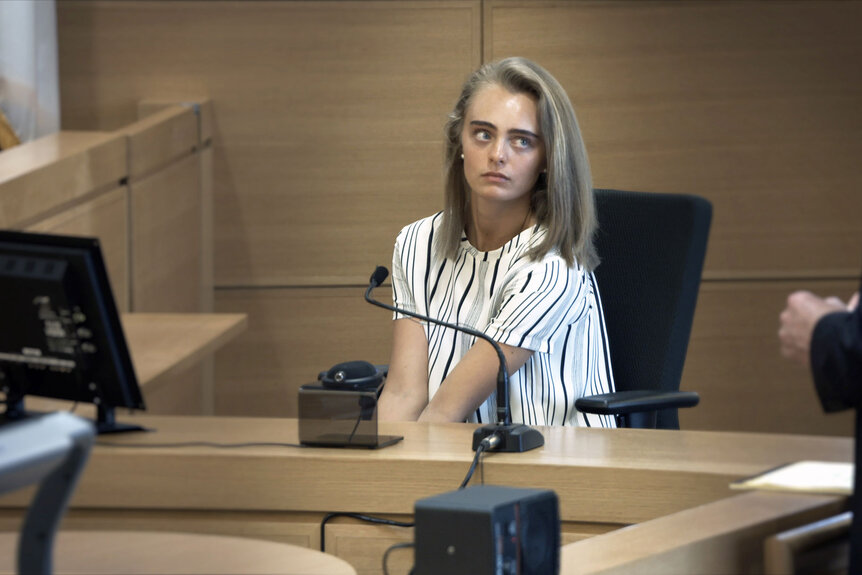Create a free profile to get unlimited access to exclusive videos, breaking news, sweepstakes, and more!
What Is The Connection Between The Michelle Carter Case, 'Glee' And 'A Fault In Our Stars'?
Journalist Jesse Barron said that Michelle Carter "had this desire for things to be more intense, more like stories than they really were."

Movies and TV shows can remind us of ourselves and even inspire us, but what happens when they intertwine with our own lives in a deep and disturbing way? For some, the fictional lives of characters — and maybe even the actors who play them — can merge with their fantasies and seep into their realities.
It appears that Michelle Carter, the teen (now woman) infamously known for encouraging her teen boyfriend to kill himself, injected romanticized bits of fiction into very real parts of her life. Conrad Roy III died in 2014, after he filled his truck with carbon monoxide while sitting in a parking lot. Carter was the last person he spoke to, according to his phone records, presented in HBO's new documentary, "I Love You, Now Die: The Commonwealth v. Michelle Carter." Post-death, a trail of text messages revealed that Carter, then 17, was relentless in her pro-suicide texts to him.
The texts exchanged between the teens were used in court, and led to Carter's involuntary manslaughter conviction in 2017. She's currently serving a 15-month sentence while her defense tries to have her conviction vacated.
HBO's new documentary chronicles the controversial case. In it, journalist Jesse Barron, who wrote a piece on the case for Esquire, dived into the strange link between Roy’s death and fictional works like “Glee” in Carter’s 17-year-old mind.
A fantasy relationship
First, Barron explained that Carter was way more into the relationship than Roy was, and that she lacked an ability to “apprehend reality.”
“The relationship was much more Michelle’s fantasy and Michelle’s idea than it was Conrad’s," he said in the documentary.
Texts between the pair show that Carter once asked Roy if he thinks they’ll get married someday. In another, she asks if she can be his girlfriend.
“I want to be able to say I was your girlfriend,” she texted him.
“Yes you are,” he responded.
“I am? :)” she asked.
“i guess,” he responded.
Barron explained that Roy was “alternately kind of mean to her, kind of sweet to her, kind of negging her, for most of the relationship." Did Carter see the relationship for what it really was? The journalist noted that Carter incorporated a lot of references to movies and TV shows into their mostly text-based relationship.
‘Glee’
"But by far, by far, the most common source for that kind of language was ‘Glee,” Barron said. "Glee" is a fictional high school musical comedy-drama television series that ran between 2009 and 2015. More specifically, Carter seemed obsessed with one of the show’s lead characters, played by Lea Michele, and Michele’s relationship with the popular football quarterback character played by Cory Monteith.
Carter often tweeted about the actress, calling Michele her "wcw [woman crush Wednesday] forever," and her "favorite person in the whole world and my bae forever,” according to the documentary.
“I think she connected with Lea Michele on a kind of profound level that went beyond what a normal teen identifying with a star, you know, may feel like," Barron said.
That profound connection permeated Carter’s relationship with Conrad.
“Often when she was writing to Conrad or about Conrad, she would borrow from text that was in this TV show,” Barron explained.
In a direct imitation of a Michele line from the show, Carter texted Roy "you were my first love, and I wanted more than anything for you to be my last.”
To make things more muddled and creepy, Michele and Monteith were dating in real life, too. Monteith’s life was tragically cut short when he died in a hotel room after suffering a drug overdose on July 13, 2013. That is exactly one year to the day before Roy's body was found, Barron noted.
After the tragic death of Monteith, “Glee” aired a special tribute episode for both the actor and the character. Carter watched that episode and told Roy, while watching the episode, that it’s “just making me realize that someday you may not be here anymore and stuff...” She went on to say that it made her think about how life would be when he, Roy, was gone.
“It’s the first moment where you realize that Michelle has like a completely other story going on that has nothing to do with Conrad specifically,” Barron said, adding that the “idea that she would be the person in ‘Glee’ who had a boyfriend who was the quarterback who had sort of tragically died I think was kind of more real to her than it probably is to most people.”
The prosecution claimed Carter wanted Roy to die so that she could become more popular.
The documentary details how Carter used quotes from the show following the death of Monteith’s character, and from interviews that Michele gave about her real life ex, to express herself following the death of Roy. Some of those expressions came in nearly verbatim imitations.
“This is weird, this is really weird.” Barron said of those texts. “I think it translates to that Michelle had little, if any, idea of who she was, that she identified extremely strongly with this other world, this other life.”
Barron added that Carter "had this desire for things to be more intense, more like stories than they really were.”
Erin Lee Carr, director of "I Love You, Now Die" told USA Today that the "Glee" connection was "the clearest example that Michelle Carter was living in a different reality."
Carr said as a teen she was obsessed with "Buffy the Vampire Slayer" and "would recite it ad nauseam, but I never participated in grabbing dialogue from a show or an interview and using it as my own."
“The Fault in Our Stars”
"The Fault in Our Stars" is a 2014 romance film based on a novel by the same name about two teenagers with cancer who fall in love. It ends with the boy dying and the girl having to come to terms with his death.
Carter saw it in the theater, and watched it just five days before Roy died, according to the HBO documentary.
Besides the obvious premise parallels, Barron noted that the movie has at least one scene that is eerily similar to Roy’s demise.
“At the climax of the movie, the boy Gus is dying in a gas station in a Jeep and he calls his girlfriend for help,” he said. “She calls the police and he gets into an ambulance.”
Did this remind her of Roy or maybe even inspire his death in some way? He ended up dying in a K-Mart parking lot.
“I think the question is whether or not she was kind of writing some story in her head or writing some movie that for some reason had to end with him dying, or whether she literally has no idea what she’s done,” Barron said.
The second part of "I Love You, Now Die" airs July 10 on HBO.






















